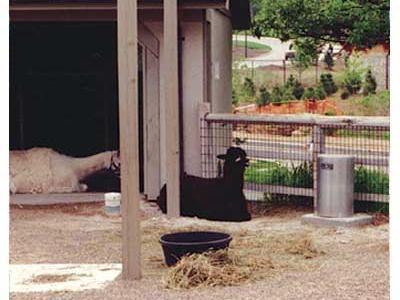Raising Livestock: How to Raise Premium Livestock for Making Money

You may remember the old Wendy’s ad: “Where’s the beef?” If you’re considering raising livestock for a living, you need to do your research, prepare your facilities, and make a commitment to hard work. Then, and only then, you can point and say, “There’s the beef” and ultimately, “There’s the profit.”
Do Your Homework
What kind of cattle do you wish to raise? What breeds make the most sense for your acreage and area? Every region of the country has a different climate. Check out this list of breeds as you decide what types work best to meet your goals. You may also want to consider crossbred cows. Speak with area livestock keepers and select a breed that is best suited for your location. Make sure your local veterinarian is qualified to care for your animals.
Get Organized
Begin your new operation by setting up a system to keep detailed records of all financial purchases, vaccination schedules, food consumption, breeding and sales.
Prepare Your Facilities
Determine how much acreage you’ll need for the number of cattle you’ll purchase. Make sure you have enough land and the right resources. At the minimum, your cattle will need proper grazing areas, a perimeter fence, a pen, a shelter, and clean feeding areas. Depending on the size and type of your herd, you may also need chutes and/or higher or electrified fences. If you need to make improvements to your land, make sure you have all the necessary building permits.
Purchase the Right Equipment: Livestock Waterers and Feeders
Protect your investment. Cattle need plenty of clean, fresh water. In fact, during hot weather, a nursing mother cow can drink up to 18 gallons of water each day. When it comes to eating, cattle can consume up to three percent of their body weight in dry feed. Make sure you have the proper waterers and feeders to keep up with that type of demand. No matter what the weather conditions, make sure your herd has enough to drink and eat by investing in any of Nelson’s stainless steel, easy-to-mount and energy-efficient ,waterers and feeders.
Consider the Alternatives
Cattle aren’t the only type of livestock that can provide profits or pleasure. Consider starting a niche-based hobby farm as part of your strategy. While many people love beef, some prefer only locally raised grass-fed or organic beef. Market yourself as an organic producer and sell directly to individuals or restaurants or local organic food stores.
Depending on your location, research new market opportunities for supplying other types of meat and foods. Consider raising kid goats and selling lamb meat. Invest in alpacas and harvest their fleece for profit. Raise free-range chickens and sell them for their meat or eggs. Keep sheep and/or goats and use their milk to make cheese and yogurt. Forgot the typical turkey, consider breeding and raising heritage turkeys. When it comes to niche marketing and people’s tastes, the possibilities are endless.
For additional information about raising livestock, check out the National Resources Conservation Service and the National Sustainable Agriculture Information Service websites.
Related news
 The Importance of Water Quality for Livestock and Horses
The Importance of Water Quality for Livestock and Horses Up to three quarter’s of a horses body is comprised of water; water accounts for up to 80 percent of cattle weight.
 Automatic Livestock Waterers: Preparing for Winter
Automatic Livestock Waterers: Preparing for Winter Water is the most essential nutrient for livestock. In the summer time, troughs need cleaned and refilled every day.
 Preparing Your Livestock for Cold Weather – Your Complete Guide
Preparing Your Livestock for Cold Weather – Your Complete Guide With the winter storm that swept through the country recently, winter came suddenly and ferociously. And even though my family has farmed for generations